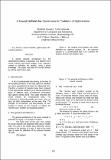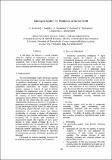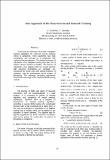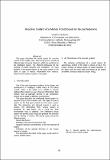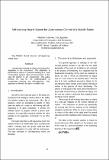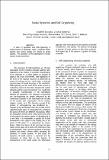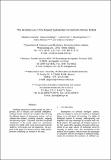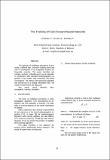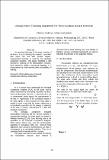Поиск по всему репозиторию:
Просмотр по автору "Golovko, V."
Отображаемые элементы 1-9 из 9
-
A Neural NetWork for Combinatorial Problems of Optimization
Golovko, V.; Derechennik, S. (BPI, 1999)A neural network architecture for the optimization problems is discussed. It is a feedforward neural network with fixed weights. Such approach consists in definition the weights, using a priori knowledge. This paper describes the neural network for solving optimization tasks.2021-07-27
-
Intelligent System for Prediction of Sensor Drift
Golovko, V.; Savitsky, Y.; Sachenko, A.; Kochan, V.; Turchenko, V.; Laopoulos, T.; Grandinetti, L. (BPI, 1999)ln this paper the features of neural networks using for improve of measurement accuracy of physical quantities by sensor drift prediction are considered. There is use a technique of data volume increasing for training of predicting neural network by using of separate approximating neural network.2021-07-27
-
New Approach of the Recurrent Neural Network Training
Golovko, V.; Savitsky, Y. (BPI, 1999)In this work the technique o f creation o f adapthre training algorithms for recurrent neural networks (RNN) is cortsidered. These algorithms have high convergence and accuracy on a comparison with traditional backpropagation. The original technique of calculation of an adaptive training step with use ...2021-07-27
-
Reactive Control of a Mobile Robot Based on Neural Networks
Golovko, V. (BPI, 1999)This paper describes the neural system for reactive control of the mobile robot. The neural system consists of different types of neural networks, which are combined in the intelligent system. The efficient techniques for the training of neural networks are considered. The main problem of the neural ...2021-07-27
-
Self-training Neural System for Autonomous Control of a Mobile Robot
Golovko, V.; Ignatiuk, O. (BPI, 1999)Unsupervised training is of great importance for adaptation to the emironment. This adaptation is performed by means of continuos training as a result of interaction between robot and emironment. In this case the teacher is the emironment. This paper presents the way for the implementation of unsupervised ...2021-07-27
-
Social Dynamics and Self-Organizing
Golovko, V.; Borisyuk, Z. (BPI, 1999)A view of dynamics and self-organizing of social systems is presented. Both a separate Homo sapiens and human society are viewed as social systems. The dynamics of the development of such systems is also examined.2021-07-27
-
The Architecture of the Neural System for Control of a Mobile Robot
Golovko, V.; Schilling, K.; Roth, H.; Sadykhov, R.; Albertos, P.; Dimakov, V. (BPI, 1999)Building autonomous mobile robots has been a primary aim of robotics and artificial intelligence. Artificial neural networks are capable of performing the different aspecis of autonomous drmng, such as collision-free motions, avoiding obstacles, mapping and planning of path. This paper describes the ...2021-07-27
-
The Training of Feed-Forward Neural Networks
Golovko, V.; Dunets, A.; Savitsky, Y. (BPI, 1999)The training of multilayer perceptron is generally a difficult task. Excessive training times and lack of convergence to an acceptable solution are frequently reported. This paper discribes new training methods of feedforward neural networks. In comparison with standard backpropagation algorithm it ...2021-07-27
-
Unsupervised Training Algorithm for Recirculation Neural Network
Golovko, V.; Gladyschuk, V. (BPI, 1999)Unsupemised learning is the great promise of the future. In such training the network is provided with inputs but not with desired outputs. Unsupemised learning is used for the principal component networks. This paper describes a nerw method for training of the recirculation networks. Such method is ...2021-07-27
